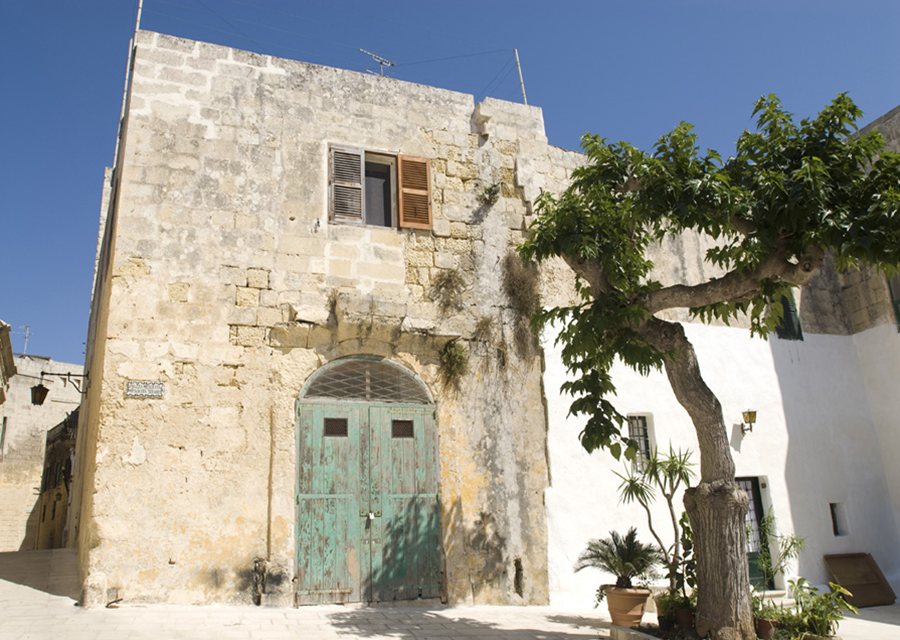Mdina travel guide: overview
The Romans called their town Melita, the Arabs Medina, and in the early days of the Knights it was known as Città Notabile. When the Knights completed the building of the new city of Valletta, the old capital was rechristened Città Vecchia (Old City) to distinguish it from the new. The Maltese, however, corrupting the Arabic, preferred Mdina and that is the name that stuck.
As the years passed and Malta fell into different hands, so the city flourished. Beautiful palaces gave the city a remarkable patrician air. In 1429, when the Saracens attempted to conquer Malta, Mdina stood firm because, as legend has it, St Paul appeared riding a white charger and brandishing a flaming sword to exhort the Maltese defenders. In recognition of this bravery, Alfonso V of Aragon, into whose hands the islands had now passed, gave the city the sobriquet of Città Notabile (“Noble City”).
Over a century later, during the first Great Siege, the city once again acquitted itself with honours and possibly changed the whole fate of Christendom. Its cavalry garrison attacked the Turkish base camp just when victory looked to be within enemy grasp. The Turks pulled back and the tide of war was turned.
A seat of power
As the capital, Mdina was the seat of power of the ecclesiastical, military and civil authorities of medieval Malta. It was – and still is – the home of the oldest families in Malta. Within its boundaries are grand palazzi, monasteries, churches, cathedrals and museums. The streets were built deliberately narrow and angled so that the limited space would be used to best advantage and cooling draughts of air would be circulated. The tall stone buildings cast cooling shadows on each other in the hot summer.
Mdina is one of the world’s finest examples of a medieval walled city that is still inhabited. The city’s fortifications were completed after the Great Siege, and as the Order built Valletta, so they repaired Mdina and gave it the bastion walls that ring it today.
Mdina today
For many years it was known as the Silent City because its narrow streets were unsuitable for traffic and its use had been purely residential. But nowadays Mdina is not so silent since residents with permits may drive in with cars, and restaurants, bars, cafés and tourist attractions have been opened in the historical buildings. Nevertheless, it remains a magical place to visit, and an evening meal in one of its atmospheric restaurants is an essential experience of a trip to Malta.
Places to visit in Mdina
Mdina Cathedral
There were other churches on this site but the first documented cathedral dates back to the late 12th to the early 13th century. In 1693, the old cathedral was destroyed by a great earthquake that shook the whole of the central Mediterranean. Only the apse at the back of the cathedral survived, a credit to the renowned Maltese architect Lorenzo Gafà’ (1639–1702) who, while working on the cathedral a few years earlier in 1681, had decided to strengthen its structure.
Gafà’ was again commissioned to design and supervise the new building, which he commenced in 1697. His architectural masterpiece, and the culmination of all his artistic work, is undoubtedly the cathedral’s magnificent Baroque dome. Bold and dynamic, more sculptural than architectural, seen from a distance it rises high above the hill of Mdina and dominates the surrounding countryside for miles. The striking profile of the old city’s skyline is one of the island’s most famous.
The fine Cathedral Museum, housed in the former seminary, holds Italian and Maltese paintings, several fine engravings (some produced by Goya), and a comprehensive collection of woodcuts by Albrecht Dürer. Other highlights are Byzantine enamel miniatures for celebrating Mass on ships and magnificent 11th-century illuminated hymnals.
Carmelite Priory
The Carmelite Priory has opened its doors to the public, and developed into a fascinating space. The museum offers insights into the way of life of the cloistered Carmelite friars of the 17th century and fully showcases the impressive architecture of the priory. It is the only priory in Malta to be open to the public, but remains a functioning one, with the Carmelite friars living on the second floor.
Palazzo Falson
Also known as the Norman House, Palazzo Falson was originally built in the 14th century, and added to in the 15th century. It has been beautifully restored to reflect the domestic style of Mdina’s 16th-century Golden Age.
Mdina Experience
This is multi-lingual, multimedia extravaganza that combines an opportunity to learn about the history of the city with a chance to examine a Maltese patrician’s house.





